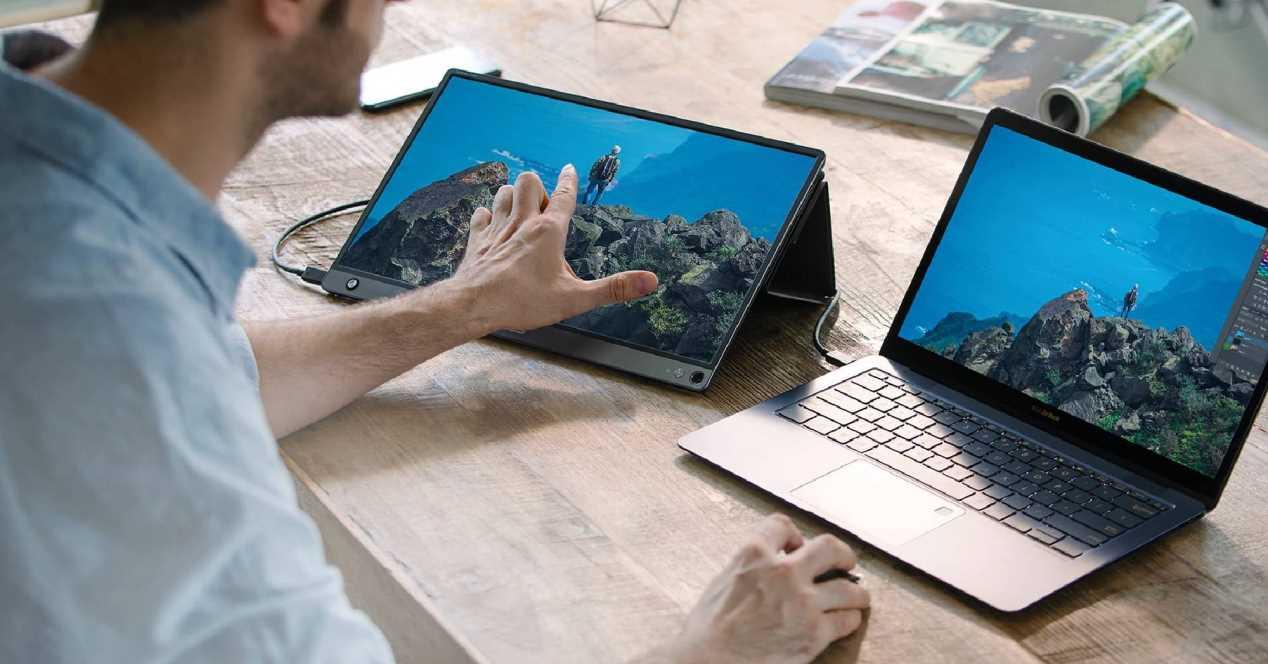One of the uses of USB-C over the Type-A cable is the fact that it can be used to power devices that tend to draw more power than normal. This not only simplifies the cables, but also removes the power supply from many peripherals. The most common of these are portable USB-C displays.
What is the use of USB-C displays?
The origin of this type of monitor comes from one of the cable variants USB-Cwho gets the nickname Alt-DP there its particularity is that it can transmit video on the data pins, either shuffled or entirely. Which in principle should not be something surprising on paper, however, since each USB cable also works as a power cable, it allows us to use the energy of our PC to supply that of these monitors and that these do not carry a power supply.

The negative point of all this is that USB-C video outputs are not much lavished on many computers, motherboards and even less on graphics cards where said port is conspicuous by its absence. In the latter case, it’s fair, since it would take several tens of watts to recharge equipment whose consumption is completely reduced. In any case, many models of these screens dThey have conventional HDMI or DisplayPort inputs.
What tasks are they recommended for?
Well, we don’t recommend them to play, they have a high response time and do not operate at high frequencies. Other than that, you won’t be able to connect your latest model graphics card. Also, if you are tower PC users, we recommend a more traditional solution, i.e. a lifetime monitor.
In any case, they are ideal for professional tasks if you have a laptop and a desk with little space. Most models are nothing more than laptop screens sold separately. They therefore usually have a size between 13 and 15 inches, much less than the desktop monitor that can be found on sale. Which makes them ideal for working in tight spaces.
Keep in mind that when you use them, they will draw power from your laptop, so they will affect the laptop’s charge and cause it to drain faster. In this case, it is ideal if you are a traveling professional to have a Powerbank of several tens of milliamps to have your laptop and your USB-C monitor well charged with energy at the same time.








